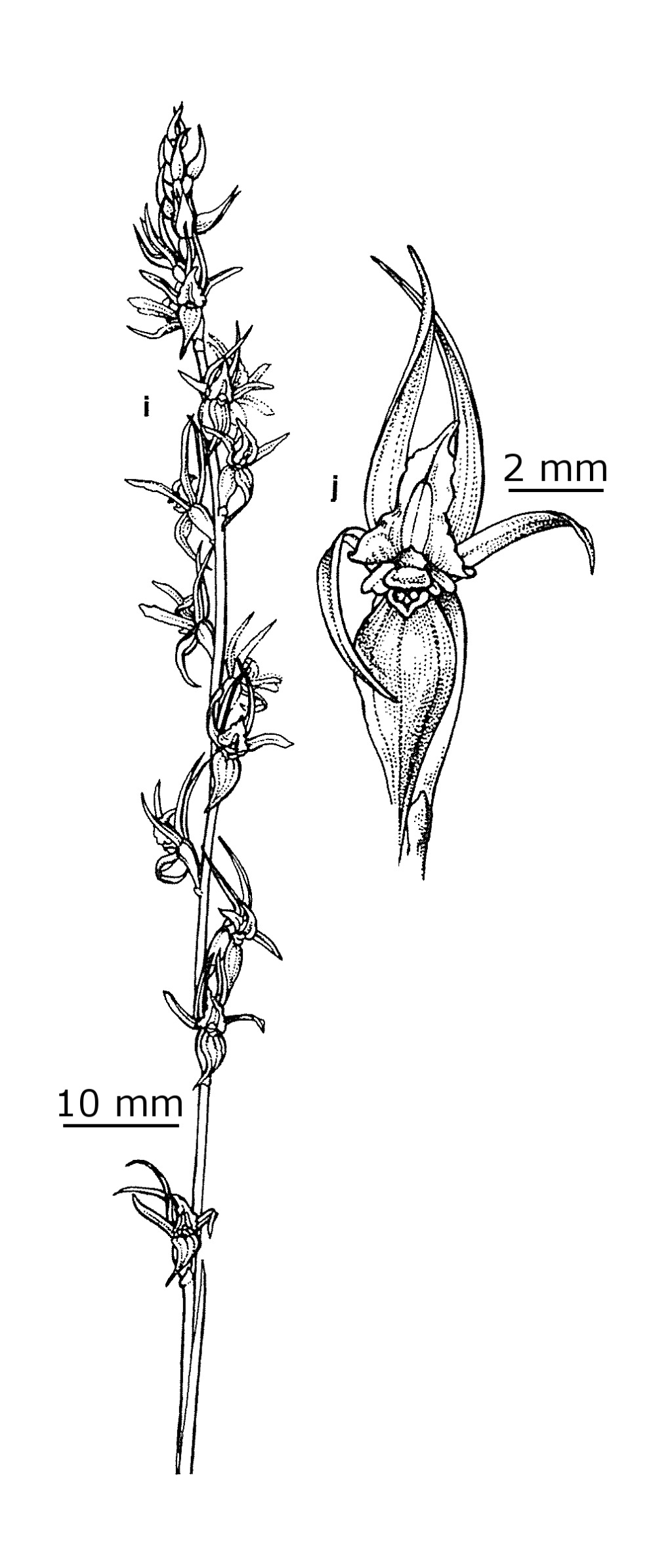Prasophyllum sylvestre
R.J.Bates & D.L.JonesFlowering stem slender, 20–50 cm tall. Leaf-blade to 10–20 cm long, 3–4 mm diam. at base, apex suberect, attenuated. Flowers 5–30, pale green, pink and reddish-brown, fragrant, in a loose, narrow raceme 4–9 cm long; pedicel slender, c. 1.5 mm long; ovary obovoid, 4–5 mm long, shiny green; sepals 7–10 mm long, dorsal sepal ovate-lanceolate, deflexed, lateral sepals united in lower half, linear-lanceolate, obliquely erect, tips slightly divergent, apex keeled; petals 6–7.5 mm long, linear, spreading or incurved, acute. Labellum 6–9 mm long, shortly clawed, pink or whitish, proximal half obliquely erect with upturned, slightly crenulate margins, distal half suddenly reflexed and constricted into a narrow tail-like portion, margins crisped or undulate; callus linear-ovate, raised, channelled, yellowish or pink, glistening, reaching almost to labellum apex. Column appendages pale pink, linear, sigmoid, c. 2.5 mm long. Flowers Oct.–Dec.
LoM, MuM, VVP, GipP, EGL, EGU, HSF. Also NSW. Uncommon species from edges of rain-forest or in tall woodland. Distribution uncertain due to confusion with other species. Flowers Nov.-Dec. Found in tall moist to wet forests and rainforest margins in far East Gippsland.
Flowering is enhanced by fire and other disturbance.
The distribution of this species is poorly known due to confusion with several closely related species.
Bates, R.J. (1994). Prasophyllum. In: Walsh, N.G.; Entwisle, T.J., Flora of Victoria Vol. 2, Ferns and Allied Plants, Conifers and Monocotyledons, pp. 869–886. Inkata Press, Melbourne.
 Spinning
Spinning
